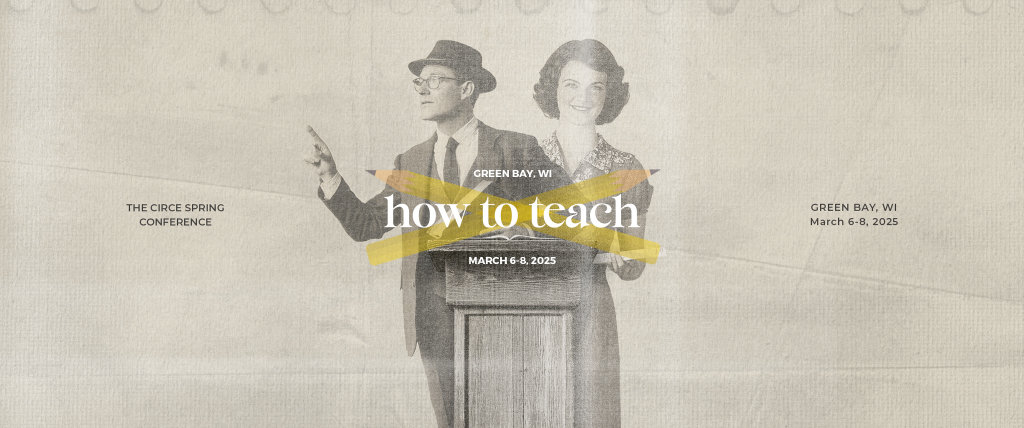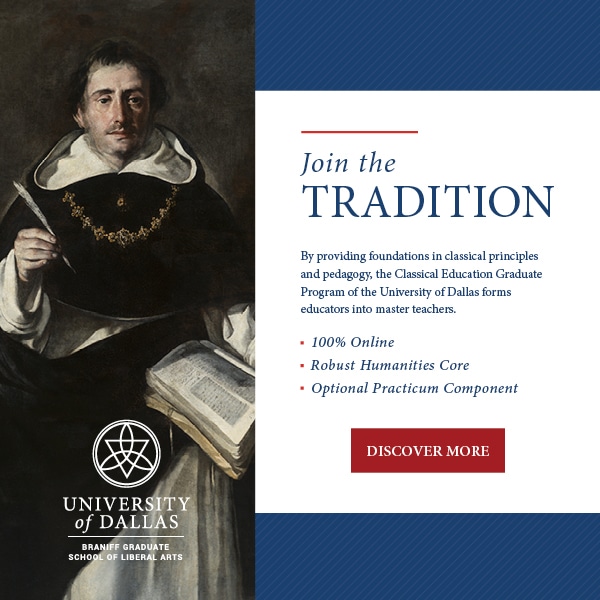The Great Paradox of Form
The backyard where our children play is covered in brittle, brown leaves now that fall is upon us. My wife had the genius idea of using a rake to carve a series of small ‘roads’ that snake in and out of the trees, and my two- and three-year-old boys absolutely love it. They spend hours running along the weaving pathways, suddenly using whole portions of the yard that they had hitherto left unexplored. I was struck by the fact that such a simple laying down of boundaries in an otherwise unbounded space had magically created a whole new realm of enjoyment and play. And this made me think yet again of the importance of Form.
I don’t generally tend to fall in love with modern poetry, and it’s mostly because it almost always lacks any sort of recognizable form. And this makes sense, as our society has, philosophically speaking, abandoned a belief in the value of form. We generally see form as being constrictive, something that stifles our self-expression. We don’t like having to conform (notice the root) to some rigid, unchanging rule that forces us to bend to it.
The sonnet is a good example of a poetic form. There are fairly stable guidelines about how a sonnet must be written; iambic pentameter is a strict and exacting schoolmaster. Yet the paradoxical thing about sonnets, I always tell my students, is that the confinements of the form are actually freeing–the rules actually help to create something far more beautiful than could have been created without them. There is a great joy that comes with having to bend one’s words to a preexisting form, and many writers have noticed that the form itself is generative–that the form contributes in some mysterious way to the life of the poem. Thus the poet is not merely writing a poem, but participating in writing a poem. The submission to form can lead to a surprising, unexpected creation.
One of my favorite modern philosophers, Harry Frankfurt, has an essay in which he discusses some fascinating ideas relating to freedom, the will, and identity. He argues that complete and total freedom, where absolutely any course of action is possible, brings not liberation, but impotence and paralysis. For without some definite identity which wills some things and does not will others, there can be no basis for rational choice; any course of action is just as preferable as the next, for without some concept of what one will be, there can be no progress towards realization of that identity. Without some form to guide what one ought and ought not will–or be– it is impossible to establish a truly coherent identity that does not change with every shifting wind.
But, as one of my students observed in class recently, we can’t really avoid form; even avoiding form is itself an alternative form, just as choosing to not have a philosophy is itself a philosophical position. We can’t help trying to make sense of this world in which we live, and form is the way we attempt to do that–with varying degrees of success. One student pointed out that, as a dancer, she has different forms to which she must learn to bend her body–and she rightly noted that this can often be a difficult, gradual, and painful process. In dancing, sports, music, painting, even worship, form is an ever-present reality that touches all aspects of life.
As I think back now to my children running tirelessly along the paths my wife had cut through the fallen leaves (shrieking, “Dad! I run!”) I am impressed with the conviction that one of my primary goals as a father, and a teacher, is to teach my children a love of form. Our identity must not be like that of the world’s–shifting, unstable, and changing. Our identity must precisely not be our own identity–it must be that of Jesus Christ. And the great paradox is this: in submitting to the form of Christ, we find freedom and our true selves. In Christ, we have an identity that is stable, sure, and true, even unto ages of ages.
Joshua Leland
Josh Leland is a humanities teacher at Covenant Classical School in Concord, NC. He earned his BA and MA in English from the University of North Carolina at Charlotte. He and his wife, Rebekah, also a teacher, and their five children, Ransom, Calvin, Alethea, Mary, and Olga live in Charlotte, NC. [Editor's note: He's also quite a good poet].










